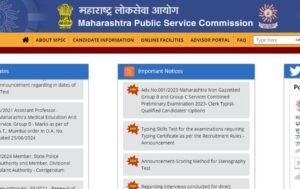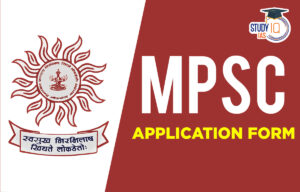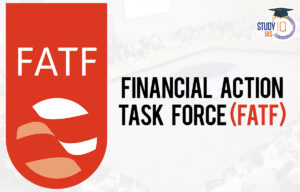Daily Current Affairs for UPSC 2023
Q) Recently seen in news, the term ‘Laundromat Countries’ is best related to which one of the following?
- The countries that have developed climate-resilient technologies
- Least developed countries, which receive most of the UN aid
- Countries that buy Russian oil and sell processed product to Europe
- The coastal nations are getting submerged due to climate change
Daily Current Affairs for UPSC – 1 May April 2023
Explanation:
- Option (3) is correct: India leads five countries named as the “Laundromat” countries that buy Russian oil and sell processed products to European countries. Laundromats’ is a term used to describe a type of financial fraud where large amounts of money, often obtained through illegal means, are moved through a complex web of transactions and accounts to disguise their origin and make them appear legitimate. Centre for Research on Energy and Clean Air identifies China, India, the United Arab Emirates, Turkey and Singapore as “laundromat countries”. The Laundromat countries increased imports of Russian oil after the Ukraine invasion. They also increased exports of refined products to the “price-cap countries” that sanctioned Russian oil, including the European Union, Australia, Japan, the United Kingdom, Canada and the United States. The EU, G7 and Australia continue to import Russian fossil fuels as refined oil products from third countries and allow transportation on their vessels and insurance. The EU has been the largest importer of these refined products, followed by Australia. And most of the laundered products are traveling on European ships.
Q) Consider the following statements about Psychedelics:
- They are non-addictive substances that can change someone’s perception.
- Psychedelics can be used in the treatment of anxiety and addiction-related health conditions.
- While narcotics are banned in India, psychedelics are allowed to be used in manufacturing of specialised medicines.
Which of the statements given above is/are correct?
- 1 and 2 only
- 2 and 3 only
- 1 and 3 only
- 1, 2 and 3
Explanation:
- Statement 1 is correct but statement 3 is incorrect: Psychedelics are a group of drugs that alter perception, mood, and thought-processing while a person is still clearly conscious. Usually, the person’s insight also remains unimpaired. They are non-addictive, non-toxic and compared to illicit drugs, they are less harmful to the end user. Some common examples of psychedelic substances include LSD (acid), psilocybin (magic mushrooms), DMT (ayahuasca), and mescaline (peyote). In India, the Narcotic Drugs and Psychotropic Substances (NDPS) Act, 1985 prohibits the use of psychedelic substances. However, Ketamine, a dissociative anaesthetic with psychedelic properties, is used under strict medical supervision, for anaesthesia and treatment-resistant depression.
- Statement 2 is correct: Psychedelic drugs work by affecting the brain’s neurotransmitter systems, particularly the serotonin system. Serotonin is a neurotransmitter that is involved in the regulation of mood, cognition, perception, and other physiological processes. Psychedelics bind to serotonin receptors in the brain, which can lead to changes in perception, thought, and mood. Psychedelics have shown promise in the treatment of various mental health conditions, including depression, anxiety, and addiction. Some users report that psychedelics have helped them gain new insights and perspectives on themselves and the world around them, leading to personal growth and spiritual experiences. Psychedelics have been associated with increased creativity and artistic expression in some users.
Q) With reference to ‘Meitei community’, consider the following statements:
- Meiteis can be found in both India and Myanmar.
- The Meitei village is where modern polo’s early variations were first played.
- The Lai Haraoba dance style of Meiteis is the source of the classical Manipuri dance.
Which of the statements given above is/are correct?
- 1 only
- 1 and 2 only
- 2 and 3 only
- 1, 2 and 3
Explanation:
- Statement 1 is correct: Meitei community members will be filing contempt proceedings against the Hill Areas Committee (HAC) of the Manipur Assembly for passing a resolution opposing their inclusion under Scheduled Tribe (ST). Meiteis are the dominant community of Manipur, found majorly in Imphal plains. They can also be found in the states of Assam, Tripura, Nagaland, Meghalaya, and Mizoram. Some of them reside in Myanmar and Bangladesh.
- Statement 2 and 3 are correct: A majority of them identify as Hindu, while about 8% are Muslim. They speak the Meitei language, which is officially known as Manipuri. It belongs to the Tibeto-Burman language family. Manipuri was included in the Eighth Schedule of the Indian Constitution in 1992. Maliyafam Palcha Kumsing is the traditional calendar of the Meitei community, which has 12 months and a 7-day week, like the Gregorian calendar. The classical Manipuri dance form has its roots from the Lai Haraoba dance form. Martial art form Tang-ta originated from Meitei Knights. Sagol Kangjei, which is the earliest form of modern-day Polo, traces its origin to Manipur and Meiteis. Mukna Kangjei is a type of traditional wrestling popular amongst the Meiteis.
Q) Consider the following statements:
- Moist mixed deciduous forest with tropical semi-evergreen forest is the predominant type of vegetation here.
- The Erenga Kharias and Mankirdias tribes live here and practise traditional agricultural activities.
- Indian bison, chital, sambar, barking deer, and mouse deer are also found here.
- Recently a rare melanistic tiger was found dead here.
Which one of the following Tiger Reserve is best described in the statements given above?
- Melghat Tiger Reserve
- Similipal Tiger Reserve
- Satkosia Tiger Reserve
- Palamau Tiger Reserve
Explanation:
- Option (2) is correct: A rare melanistic tiger was found dead in the core area of Similipal Tiger Reserve (STR). Similipal Tiger Reserve is located within the Mayurbhanj District, in the Northern-most part of Odisha. The forest is predominantly moist mixed deciduous forest with tropical semievergreen forest in areas with suitable microclimatic conditions and sporadic patches of dry deciduous forests and grasslands. Two tribes, the Erenga Kharias and the Mankirdias inhabit the reserve’s forests and practice traditional agricultural activities. Other dominant tribes in the region include the Ho, Gonda and Munda, among others. It was formally designated a tiger reserve in 1956, brought under Project Tiger in 1973, and was declared a biosphere reserve in 1994. It has been part of the UNESCO World Network of Biosphere Reserves since 2009. Similipal harbours the largest population of elephants in Odisha. Indian Bisons, chital, sambar, barking deer, mouse deer etc are also found.
Q) Consider the following statements about blocking of websites in India:
- Under the Information Technology Act, the government can also ban a website on the premise that it threatens India’s friendly relations with foreign countries.
- The courts can also order internet service providers to block websites that provide access to pirated content.
Which of the statements given above is/are correct?
- 1 only
- 2 only
- Both 1 and 2
- Neither 1 nor 2
Explanation:
- Statement 1 is correct: Recently, Union government has banned 14 apps in J&K, citing their use by terror groups. Section 69A of the Information Technology Act, 2000, was introduced by an amendment to the Act in 2008. It gives the Central government the power to block public access to any information online whether on websites or mobile apps. Under Section 69A, if a website threatens India’s defence, its sovereignty and integrity, friendly relations with foreign countries and public order, the government can ban it, after following due procedure. Detailed procedures to do so are listed under the Information Technology (Procedure and Safeguards for Blocking Access of Information by Public) Rules, 2009.
- Statement 2 is correct: Courts in India also have the power to direct intermediaries to make content unavailable in India to provide effective remedy to the victim/plaintiff. For example, courts may order internet service providers to block websites which provide access to pirated content and violate the plaintiff’s copyright.


 MPSC Rajyaseva 2025 Notification, Eligib...
MPSC Rajyaseva 2025 Notification, Eligib...
 MPSC Application Form 2025, Apply Online...
MPSC Application Form 2025, Apply Online...
 Financial Action Task Force (FATF), Func...
Financial Action Task Force (FATF), Func...





















